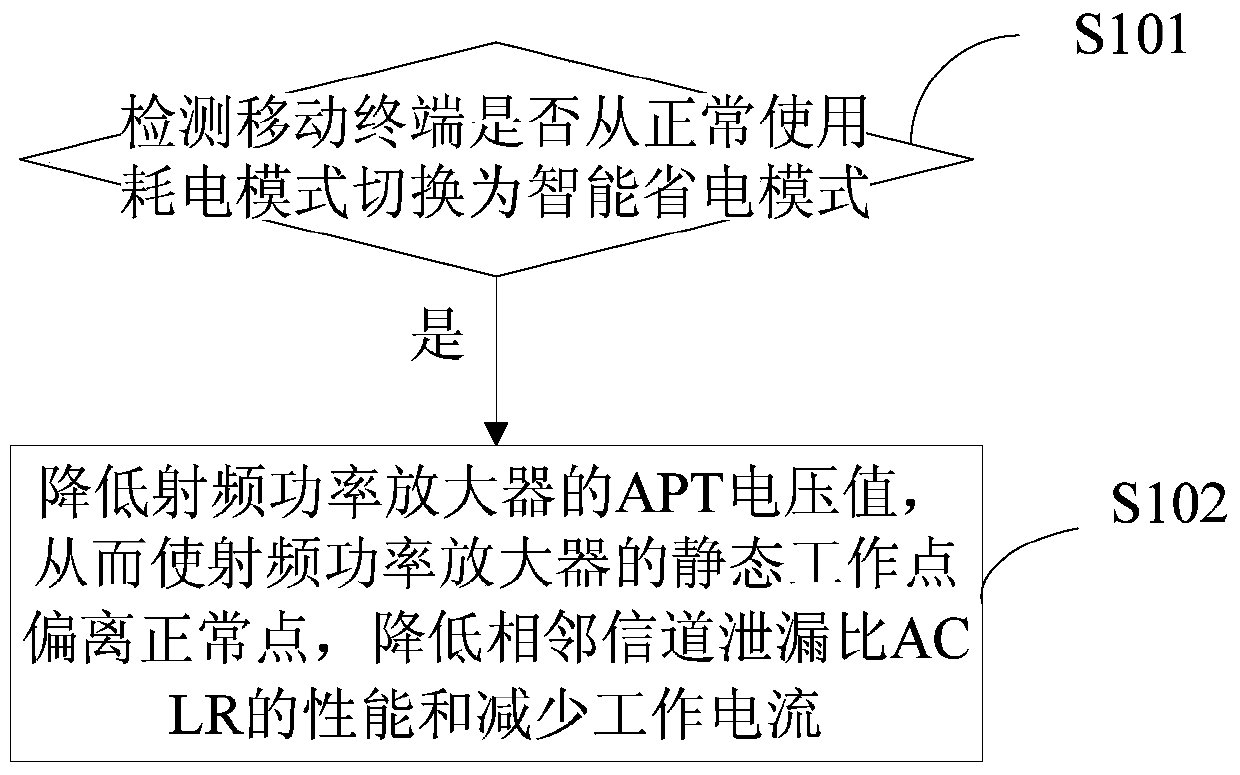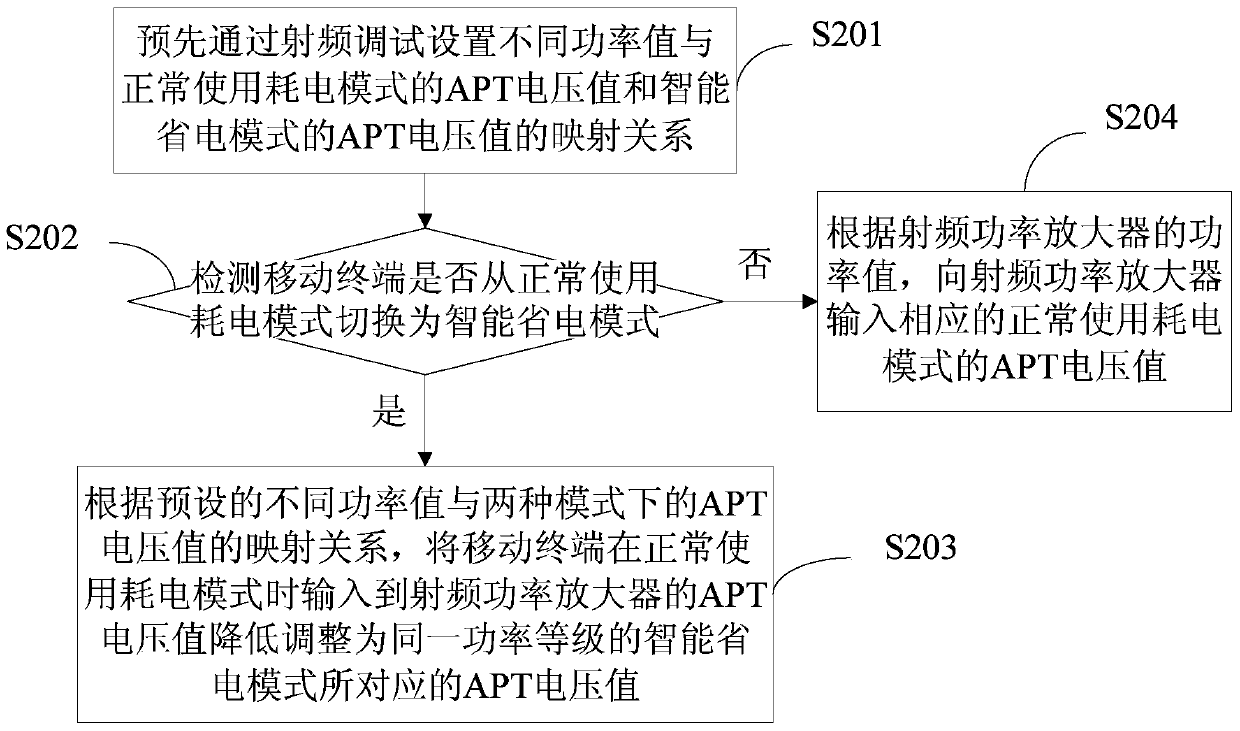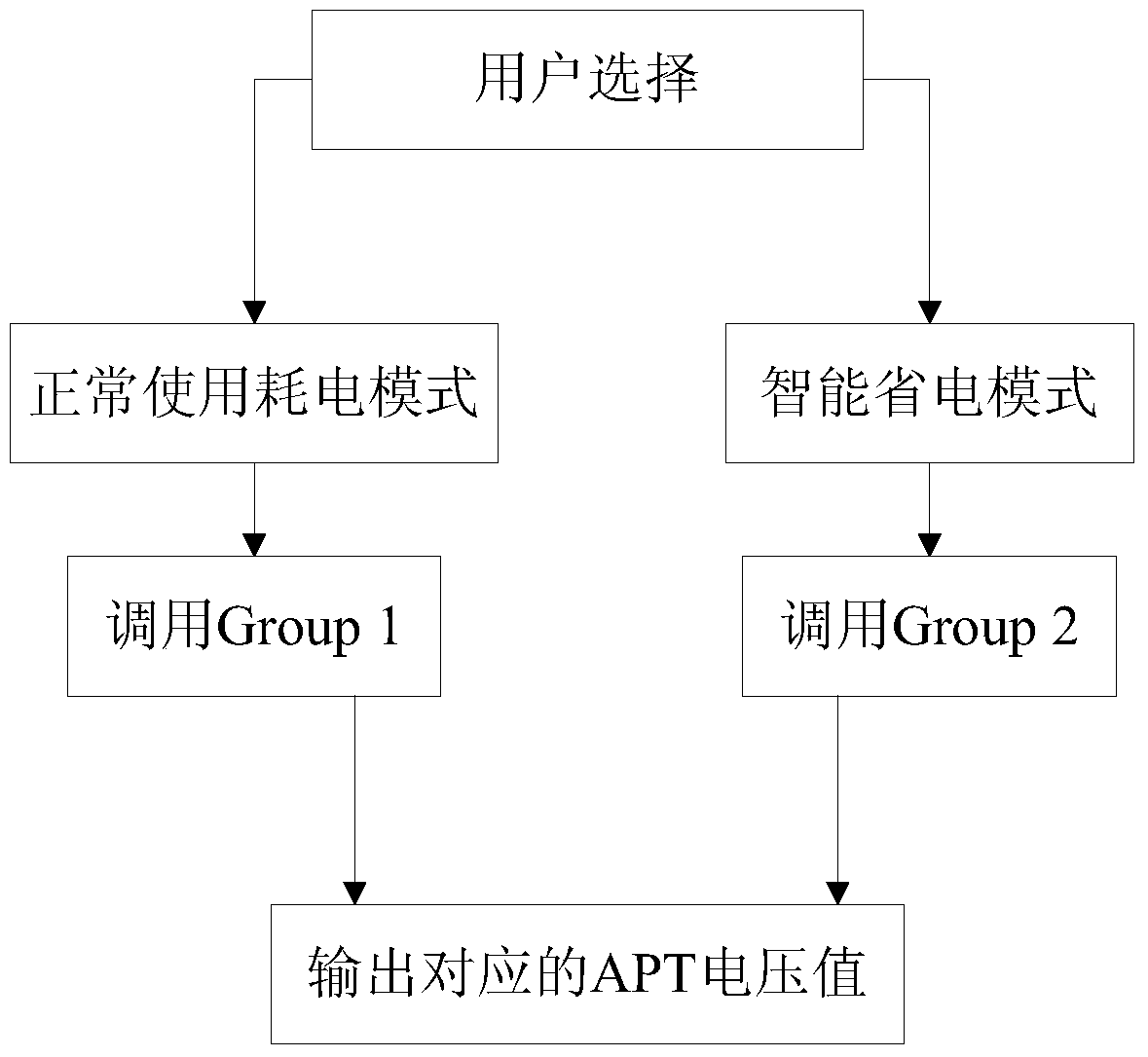A method and device for improving radio frequency power consumption of a mobile terminal
A mobile terminal and radio frequency technology, which is applied to the parts of the amplifying device, reducing energy consumption, power management, etc., can solve the problems affecting the performance of radio frequency indicators, and users cannot change and debug by themselves, so as to achieve long-lasting battery life and reduce radio frequency power consumption , the effect of convenient operation
- Summary
- Abstract
- Description
- Claims
- Application Information
AI Technical Summary
Problems solved by technology
Method used
Image
Examples
Embodiment 1
[0034] Embodiment 1 of the present invention provides a method for improving radio frequency power consumption of a mobile terminal. This embodiment will be described in detail below with reference to the accompanying drawings. figure 1 It is a flow chart of the method of Embodiment 1 of the present invention, please refer to figure 1 , the method of the embodiment of the present invention includes the following steps:
[0035] Step S101, detecting whether the mobile terminal is switched from the normal power consumption mode to the smart power saving mode;
[0036] When the mobile terminal is normally used by the user, the mobile terminal is in a power consumption mode for normal use. If the user needs to prolong the use time of the mobile terminal, he can select the intelligent power saving mode according to actual needs, and at this time the mobile terminal will switch from the normal use power consumption mode to the intelligent power saving mode. When it is detected tha...
Embodiment 2
[0041] Embodiment 2 of the present invention provides a method for improving radio frequency power consumption of a mobile terminal, which is an improvement on the basis of Embodiment 1. The present embodiment will be described in detail below in conjunction with the accompanying drawings. figure 2 It is the method flowchart of the second embodiment of the present invention, please refer to figure 2 , the method of the embodiment of the present invention includes the following steps:
[0042]Step S201, pre-setting the mapping relationship between different power values and the APT voltage value of the normal use power consumption mode and the APT voltage value of the smart power saving mode through radio frequency debugging;
[0043] Specifically, APT (Average Power Tracking Technology) is an inspection technology based on different power and different voltage configurations.
[0044] In this embodiment, the mapping relationship between the different power values and t...
Embodiment 3
[0057] Embodiment 3 of the present invention provides a device for improving radio frequency power consumption of mobile terminals, please refer to Figure 4 , the device of the embodiment of the present invention includes a detection module 11 and a voltage processing module 12, and the principles of the above modules will be described in detail below.
[0058] The detection module 11 is used to detect whether the mobile terminal switches from the normal power consumption mode to the smart power saving mode.
[0059] When the mobile terminal is normally used by the user, the mobile terminal is in a power consumption mode for normal use. If the user needs to prolong the use time of the mobile terminal, he can select the intelligent power saving mode according to actual needs, and at this time the mobile terminal will switch from the normal use power consumption mode to the intelligent power saving mode.
[0060] The voltage processing module 12 is used to reduce the APT volta...
PUM
 Login to View More
Login to View More Abstract
Description
Claims
Application Information
 Login to View More
Login to View More - R&D
- Intellectual Property
- Life Sciences
- Materials
- Tech Scout
- Unparalleled Data Quality
- Higher Quality Content
- 60% Fewer Hallucinations
Browse by: Latest US Patents, China's latest patents, Technical Efficacy Thesaurus, Application Domain, Technology Topic, Popular Technical Reports.
© 2025 PatSnap. All rights reserved.Legal|Privacy policy|Modern Slavery Act Transparency Statement|Sitemap|About US| Contact US: help@patsnap.com



